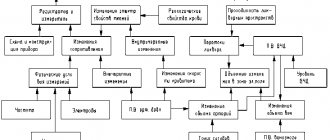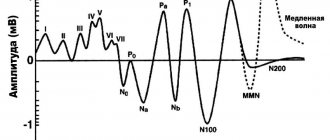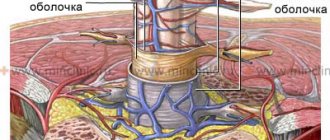It has been proven that the female brain is approximately 8-12 percent smaller than the male brain, which, however, does not mean that the fairer sex is naturally dumber. Nevertheless, there is a difference. Male and female brains perceive some things differently. Researchers have learned why this happens and what is the main difference between the brains of men and women.
Are there differences?
For centuries, debates about the difference in thinking, behavior and perception of situations between men and women have not subsided. But if earlier discussions were more like accusations with nothing behind them, today this topic can be seriously debated, based on real scientific facts.
For the most part, gender differences between men and women are the result of the structure and functioning of the brain. It is on this that the cognitive and behavioral differences inherent in both sexes depend. There was a time when researchers even talked about the “field” of the brain. Proponents of this theory argued that the brains of all men work according to a generalized scheme, while the gray matter of all women has its own unified “program”.
Content:
- Are there differences?
- Weight and volume
- Development of the hemispheres
- Verbal skills
- Perception
- Stress
- Memory
- Teamwork
- Sexual behavior
- Our brains shrink in different ways
- So why are we so different
True, over time this theory had to be abandoned. This is because, as it turns out, there are almost no purely “female” or purely “male” brain types in nature. Although scientists do not deny the fact that the “control center” of the weaker and stronger sex has certain gender characteristics.
An international team of researchers observed the behavior of almost 500 thousand people of different ages for many years, and also studied approximately 2.5 thousand MRI images of the brains of men and women aged 44 to 77 years. This allowed scientists to make a number of amazing discoveries. Experts were able to examine and measure 68 different areas of the central nervous system. The results showed that women tend to have a thicker cerebral cortex than men, but the stronger sex has a larger brain.
The stress hormone cortisol also plays a role
Brain scientist Roth concludes from previous research that hormonal relationships are primarily responsible for differences in behavior between the sexes. This is confirmed by the results of behavioral studies. Thus, it is known that women react more strongly to stress than men, and are usually more fearful and anxious than men.
Stress is closely related to the hormone cortisol: high levels of cortisol increase fear of pain and danger. Women do not have a specific neuroticism core in their brain. But there is a hormonal cycle that can easily explain why women are more nervous than men.
This is because testosterone suppresses the stress hormone cortisol. Because women, on average, have less testosterone circulating in their brains, stress hormones can operate unhindered. In men, during testosterone-rich moments, the influence of cortisol decreases.
Because these hormonal differences are established before birth, they likely influence how behavior develops. For example, brain researcher Roth suggests that boys develop better spatial reasoning over the course of their lives because they are hormonally primed to explore and make discoveries. They climb, build, and try new things.
Weight and volume
The first and most obvious distinguishing feature between male and female brains is the physiological structure of the organ. Firstly, in men it is about 100 g heavier and also larger in volume. True, researchers often explain this fact not so much by the characteristics of the organ itself, but by the general physiological characteristics of the human body.
Men's bodies are, in principle, larger and more voluminous than women's. This may be why the stronger sex has a larger brain. As evidenced by modern science, this characteristic does not in any way affect cognitive or other abilities. Just remember the brain of a Neanderthal. It was much more significant than that of a modern person. But did that make him smarter? Therefore, experts emphasize that for good brain function, it is not its volume and weight that is important, but the quality of connections between neurons.
It is also interesting that different parts of the male and female brain also differ in parameters. For example, young ladies have a larger right frontal pole, pars triangularis, inferior and middle frontal gyri, temporal plane, anterior part of the cingulate gyrus and left parahippocampal, parietal operculum, insular cortex, thalamus, Heschl's gyrus, precuneus, as well as the lateral part of the occipital cortex. bark. In males, the hippocampus, tonsils, posterior part of the cingulate and anterior part of the parahippocampal gyri, temporal poles, putamen and some areas of the cerebellum are larger in size.
Development of the hemispheres
Many people probably know that the left hemisphere of the brain is responsible for rational thinking, logic and the ability to analyze. The right controls emotions and intuition. Both of them are developed differently in men and women. Most likely, most of those reading these lines thought that the left side of the brain is more developed in males, and the right - in females. And they were wrong.
The hemispheres of the brain in men and women are actually developed differently. Even in the womb, boys’ left hemisphere develops more slowly, but the right hemisphere “gains weight” relatively quickly. Experts suggest that this is due to the effects of testosterone. But for women, both hemispheres are equally involved in their work. As a result, it is easier for women to manage skills characteristic of the left hemisphere (verbal skills, communication), while men have more developed abilities that are controlled by the right side of the brain (active action, competition).
This feature of the brain structure affects the ability of the sexes to demonstrate spatial and social skills. Men are more focused on developing spatial thinking; it is easier for them to perceive reality and quickly coordinate their actions with it. The structure of the female brain is designed for the development of social skills, work in an analytical and intuitive mode, as well as multitasking (performing several tasks at the same time).
The difference also exists at the cellular level. In women's brains, nerve cells are located closer to each other than in men's. And this feature is crucial when it comes to the speed of signal transmission between different parts of the brain. In addition, in men, individual areas within the hemisphere “communicate” more closely, while in women interhemispheric connections are more developed. This is explained by the fact that in young ladies the right and left hemispheres are connected by denser nerve fibers than in men. This factor influences the features that we will discuss further.
The brains of men and women differ in the orientation of neural connections
Rice.
1. Human connectome. “Each human brain contains 100 billion neurons, between which there are 100 thousand miles of nerve processes, the number of synaptic transmissions connecting them lies between 100 trillion and a quadrillion - and this is the human connectome. “I am my connectome,” says neuroscientist Sebastian Seung. Image from www.humanconnectomeproject.org
American scientists have identified gender differences in the structural organization of connections in the cerebral cortex. Men have better connections within each hemisphere, as well as within most parts of the cortex; in addition, various structural modules in the parts of the cortex are clearly distinguished. Women have more interhemispheric connections and a less developed modular structure. At the same time, for the cerebellum the relationship is the opposite: in men, interhemispheric connections are better developed, and the modular organization is weak. These differences in the organization of cortical connections are reflected in the dominance of different skills in men and women. Men perform better coordinated and precise actions, while the organization of the female brain is focused on performing social tasks.
The initiator of various repairs in the house is almost always a woman. When the husband is informed about the need to repair something, he remembers the most urgent and important matters and, leaving his mistress some funds and giving him freedom of action, goes to work for a long time (preferably for the entire duration of the repair). The housewife gets down to business, not forgetting to complain that repairs are a man’s job, that other people’s husbands fix the taps, electricity, and shelves with cabinets, but she has to look for the craftsmen herself... You’ve probably encountered a similar situation, if not you yourself, then your friends or acquaintances. It is trivial in its everydayness, but interesting from the point of view of the structure of the brains of men and women. It reflects the differences in the structure of the brains of men and women, and the cultural traditions of our society, and even their development in the modern world. Of course, scientists from the University of Pennsylvania and the Children's Hospital of Philadelphia did not think about the gender mysteries of repair, but they did an excellent study on sexual dimorphism in the structure of the connectome (see also Connectome) of the human brain. And the conclusions from this study, in addition to direct structural differences in the structure of the brain, also well explain small plots from prosaic life.
Scientists focused on the organization of neural connections in the cortex and subcortical layer: they found out which parts of the brain and how many connections are connected. The organization of connections in the brain as an integral structure is called a connectome; Depending on the tasks and methods, a functional connectome and a structural connectome are distinguished. In this case, the scientists were working on the structural connectome. For their study, they used diffusion tensor imaging (DTI). This method allows tracking of axonal paths by recording the anisotropic diffusion of water molecules along myelinated fibers (i.e., in the white matter of the brain).
For the work, brain scans were taken from 949 people: 428 men and 521 women. The age of the people ranged from 8 to 22 years, so the sample was divided into three age groups - children, adolescents, and youth. The authors noted that for a study such as connectome analysis, the sample turned out to be one of the largest and most representative. That is why it was possible to show changes in the connectome from childhood to adolescence.
As a result of processing the scanning data, scientists obtained a number of quantitative characteristics for each structure and each area of the cortex (a total of 95 localizations accepted in neurobiology). For all localizations, we calculated the number of connections with each-with-each. Next, maps and corresponding quantitative indicators of connectivity were compiled for the structures and lobes of the cerebral cortex. These indicators and connectivity maps differed markedly between men and women.
Rice. 2.
Organization of structural connections of brain regions in men (
top
) and women (
bottom
).
Connections within one hemisphere are shown in blue
, and interhemispheric connections are
in orange
.
Only those connections that are reliably determined for the vast majority of the sample are shown. The dots
show localizations (Regions of interests) included in different lobes of the brain:
blue
- frontal lobe,
blue -
temporal,
green
- parietal,
red -
occipital,
white
- subcortical layer.
Figure from the discussed article in PNAS
It is clearly noticeable that men have better developed connections within each hemisphere, while women have better developed interhemispheric connections. It is important to note that men have connections in the cerebellar hemispheres, but women do not. This difference in structure is established in adolescence: while differences in boys and girls are just beginning to emerge, in teenage boys intrahemispheric connections are already well expressed. In teenage girls, interhemispheric connections are built first in the frontal lobe, and then in girls the connections in the temporal lobes strengthen; At the same time, intrahemispheric connections are established only in adult girls; in younger and older girls they are still weak and are not detected in this analysis.
Rice. 3.
Age-related dynamics of connections between different areas of the brain in boys (everywhere
on the left
) and girls (everywhere on
the right
):
B
- children,
C
- teenagers,
D
- youth.
Only those connections that are reliably determined for the vast majority of the sample are shown. In addition, it is important to keep in mind that the most pronounced connections are shown; weaker ones are not identified in such an analysis, although in reality they exist. Colored dots
show nodes in areas included in the brain regions:
blue
- frontal lobe,
blue
- temporal,
green
- parietal,
red
- occipital,
white
- subcortical layer.
Figure from the discussed article in PNAS
In addition to gender differences in the orientation of connections, differences in the modular organization of the cortex were also found in men and women. Modules are areas of high connectivity, for which the number of connections within a module is greater than between different modules. The modules themselves are most clearly identified in men; in women they are less pronounced. The only area of the brain in which modularity is relatively poorly developed in men is the cerebellum.
Rice.
4. Red
shows areas of the brain in which the modular organization in men is better expressed than in women (a higher number of connections within a module and lower between modules), and
blue
shows the cerebellum, where the modular organization in men is much less pronounced than in women.
Modified figure from the discussed article in PNAS
, where you can also clarify methods for statistical calculations of the module connectivity indicator
How do these structural differences in cortical structure affect the behavior and skills of men and women? It is known that connections within the hemispheres and within each of the sections of the cortex as a whole serve reactions “from intention to action,” while the cerebellum mediates the motor functions of parts of the body. Interhemispheric connections of the cerebellum ensure effective coordination of actions. And all this is best organized in men, in particular because of this, they are better at spatial thinking tasks, speed and accuracy tests. Therefore, on average, the male brain is designed to perform motor functions efficiently and quickly. Interhemispheric connections establish the integration of analytical and intuitive information. Hence, the ability to perform tasks for remembering faces and social tests is higher. So the female brain is designed to provide the owner with good social skills. This difference was most likely established in the initial stages of the evolution of our species, when the social and family structure of human populations began to form.
This gender difference manifests itself in everyday situations, such as the need to repair something. Repairs of various kinds require motor skills, precision, and strength from the performer, which is why men traditionally do this. Now, in modern Western-style society, a narrow professional specialization has been established, so that repairs are carried out by trained craftsmen. They need to be found, an agreement needs to be reached with them, and their work needs to be rewarded in one way or another. All these are no longer the original, evolutionarily determined male motor skills, but on the contrary, the problem is solved with the help of social skills, social awareness, and the ability to interact with different, often strangers, people in an atypical environment. And this is already the prerogative of women, this is their historically established function. Thus, repair work quite naturally moved from being a typically male activity to being carried out by women. However, the professional specialization that has given rise to this gender shift in responsibility has only recently emerged. Therefore, the memory of former “typically” male and female occupations is still fresh in society. As a result, women, remembering these traditional attitudes, do not stop complaining about the “negligence” of their husbands. But they do not take into account that the historical difference between the organization of the male and female brain does not disappear. And men continue to do men’s things that require precision, speed and coordination of actions, while women, as before, are called upon to solve social problems.
Source:
Madhura Ingalhalikar, Alex Smith, Drew Parker, Theodore D. Satterthwaite, Mark A. Elliott, Kosha Ruparel, Hakon Hakonarson, Raquel E. Gur, Ruben C. Gur, and Ragini Verm.
Sex differences in the structural connectome of the human brain // PNAS
. 2014. V. 111. No. 2. P. 823–828.
Elena Naimark
Verbal skills
They even tell jokes about the fact that all women are great lovers of talking. But as it turns out, the desire to chat among the fair sex is inherent in nature itself. And again, it’s all about the structural features of the central nervous system.
We have already said that the cerebral hemispheres of the sexes are developed unequally. Hence the difference in working with verbal information. To “digest” what they hear, women use both hemispheres at once (including the left, responsible for the perception of verbal information). Men tend to do this predominantly on the right.
In addition (and we have also already talked about this), both hemispheres in the female body are connected with the help of powerful nerve fibers, due to which a more effective exchange of information occurs. In the male head, nature used thinner fibers for this purpose. By the way, it is precisely the structural features of the fibers connecting the hemispheres that doctors explain why women, as a rule, more easily restore verbal skills (speech) after a stroke.
This same feature of brain design explains why boys begin to speak and read later than girls.
But why did nature decide that verbal skills should be developed differently in both sexes? The theory explaining these differences was put forward by the American psychologist J. Levy. According to his hypothesis, the reason for everything is evolutionary processes. The main task of the primitive man was to hunt. And for this it was vitally important for him to navigate well in space, and not to talk.
As for the woman, even in the Stone Age she was the keeper of the hearth, took care of children and created family comfort. It was important to exchange experiences and resolve issues with other women. And in this she was helped by communication skills, which in the course of evolution were more improved along with the left hemisphere of the brain.
Statement 3. Women lack spatial imagination
In the first point, we already mentioned a 1995 study that showed that men outperform women in mental rotation tests. And although even at that time few people dared to say that women were completely devoid of spatial imagination, this stereotype took hold and turned into a cultural meme.
At first, the data from this experiment seemed so logical that for a long time they did not even try to double-check them or look for an alternative explanation for them. After all, in ancient times, women, unlike men, did not need to hunt and go far from home - which means that they seemed to have no need for developed spatial thinking. However, over time, scientists still had doubts.
Let's assume that women really have poor spatial orientation. But what if it’s not the peculiarities of the female brain, but the fact that girls, unlike boys, simply don’t train enough to do this? What if parents of girls are less likely than parents of boys to buy their children toys that are beneficial for the early development of relevant skills?
An example of forming expectations from children: an advertisement for a children's construction set with a screwdriver and a screwdriver, which will allow you to raise your child to be a “real man.” It seems that the creators of the ad do not believe that it makes sense to offer a toy that develops “thinking, imagination and fine motor skills” to children of both sexes.
Quite a lot of research has been carried out in this direction, but the results of an interesting “natural experiment” turned out to be indicative.
Ohio State University professor Ceryl Sorby developed a 15-hour course in which girls who wanted to become engineers worked hard to solve spatial problems. After completing the course, female students achieved the same results as male students who did not take the course. It turns out that there are no physiological barriers to spatial thinking in the female brain.
Conclusion Statement 3 is incorrect because it is based on incorrect premises. Women are worse at solving spatial problems, not because they are incapable of doing so due to the structure of their brains, but because they have less training in performing such tasks.
Perception
Did you know that women have more developed hearing, sense of smell and taste buds? But nature has endowed men (hunters by nature) with the ability to better distinguish small moving objects. And the main role in these differences was also played by the functioning of the brain.
Another difference is the different perception of colors. Remember the joke where a man sees all the dresses as blue, but for a woman it’s more than a dozen fundamentally different shades? So, don’t rush to laugh at your husband if once again he doesn’t see the color differences between two, say, red things. The fact is that this is how the male brain works - it simply does not perceive some shades as keenly as women. Take orange, for example. Any young lady will not only clearly see orange among the color spots, but will also be able to recognize several orange shades. But to the male brain, orange always looks more like red. In addition, it is difficult for the stronger sex to perceive the difference between shades of yellow, blue and green.
Stress
Male and female brains respond differently to stress. In a state of emotional shock in men, the left hemisphere, which is responsible for rational thinking, is activated, while the right hemisphere remains calm at this time. As for women, in stressful situations, on the contrary, the right part of the brain, which is responsible for emotions, is activated.
For this reason, men under stress tend to remember the details of the incident itself, and women tend to remember the emotions caused by it. In addition, during a scientific experiment it was proven that young ladies better remember events that caused them a surge of emotions. And this is the answer to the eternal question of men, why women pester them: “How? Don’t you remember what day it is today?!” It's simple: the reason is not that the man is bad and forgot about something, it’s just that his brain classifies events and memories associated with them using a different system.
Men love with their eyes, women love with everything at once
With men, everything is simple here: there is a tangible, visual image - there is interest and excitement. A woman makes a choice based on many factors. Surely everyone knows that in this case, the roots go back to antiquity, when the choice of a strong, promising male ensured the survival of the offspring.
A short excursion into the secrets of the female and male brain took place. Still, no matter how different we are, we cannot say that women are smarter than men or vice versa. That set of brain features allows us to complement each other well as a team. If, of course, we learn to negotiate.
And regardless of gender, the human brain needs the same load as the body. We just exchange the hardware equipment for online games “Vikium” and start training the brain. Happiness and success!
From the editor: Causes of brain atrophy and their characteristics
Memory
By the way, about memory. For most women it is indeed better than for men. But only up to a certain age. After menopause, when the concentration of estrogen in the female body decreases, memory deteriorates sharply. With changes in hormonal levels, women lose their superiority over men in terms of memory, and in old age, representatives of both sexes are “on an equal footing.” In addition, women of menopausal age have a reduced ability to learn and assimilate new information; it can be difficult to remember what she knew and remembered well before. Therefore, in old age, women are more susceptible to cognitive impairment, including dementia, than men.
In 2021, researchers found that women perform better than men on tests of word memory and language proficiency. But what's most interesting is that in some cases this ability of the female brain does its owner a disservice. The fact is that the early stages of Alzheimer's disease are usually diagnosed using just such tests - for memorizing words. So it turns out that the female brain, which has good verbal memory, can mask the initial stage of the disease. For this reason, diagnosing the early stages of Alzheimer's in women is much more difficult than in the stronger sex.
Teamwork
Research has shown that women and men adapt differently to working in teams. Representatives of the fair sex are more prone to what is jokingly called “being friends against someone.” Women easily form groups only if they understand that other women are observing their behavior. Under normal circumstances, it can be quite difficult for two ladies to find a common language. It is much easier for men to work in pairs, although, as research shows, the stronger sex is more predisposed to work in a large team rather than being divided into “groups.” It is also interesting that if a couple of a man and a woman have to work on the same project, then the lady is usually more friendly and ready for peaceful cooperation, which cannot be said about her colleague.
In addition, the researchers compared brain activity and team performance. It turned out that the performance of men and women is regulated by different groups of neurons, so the performance efficiency is higher in same-sex groups of partners. Compared to men's, women's brains are able to quickly and easily adapt from one task to another. The stronger sex requires quite a lot of energy and effort to switch between tasks; men find it difficult to perform several tasks at the same time.
Behavioral and social differences
Men and women not only feel and think, but also behave differently. Representatives of the fair sex are naturally sociable and tend to establish trusting relationships. Women are considered the best organizers, capable of unobtrusively uniting people to solve a common problem. Men are more likely to be “loners”, more adapted to competition, ambitious and aggressive. In a conflict situation, a woman prefers to solve the problem through negotiations, and a man prefers to resolve the conflict by escalating the conflict.
The female tendency to somewhat disperse attention to details also has a positive side: any representative of the fairer sex easily combines several streams of information and is able to do several things at the same time. The male way of thinking involves complete concentration on a specific topic, and moving from one thing to another requires some effort and time.
Knowing the features of the brain of men and the brain of women is very useful. In fact, this is the easiest way to understand each other and stop conflicting over trifles. Remembering how another person differs from you, you can become his support, and save yourself from far-fetched grievances and disappointments. Take care of each other and be happy!
Video from YouTube on the topic of the article:
Sexual behavior
The statement that men love with their eyes has a very real scientific basis. The male brain is programmed to perceive visual images better. Smells also have a good effect on the stronger sex. That's the whole secret of how to win the affection of a man.
The female brain is configured differently and tends to evaluate a sexual partner comprehensively. Evolution has made sure that a woman subconsciously chooses a mate, taking into account how healthy the offspring he can give her.
Our brains shrink in different ways
Brain volume is not a static indicator. With age (after about 30 years), the organ begins to dry out. Over the course of a year, a person can lose up to 0.2% of their total gray matter volume. Thus, by age 70, the brain may weigh about 200 g less than at age 25. But what’s interesting is that the brain dries out differently in representatives of different sexes.
In 2021, Finnish scientists discovered in a study that women's brains age faster than men's. Moreover, this trend continues throughout life, starting from about 35 years of age. Experts have determined which parts of the brain shrink the most. As it turns out, this process follows different patterns in men and women.
Over the years, the male brain loses volume mainly due to shrinkage of the frontal and temporal lobes of the organ. They are responsible for emotionality and cognitive functions. The female is reduced by the hippocampus and parietal lobe, involved in visual and spatial perception, memory function and language learning.
Best materials of the month
- Coronaviruses: SARS-CoV-2 (COVID-19)
- Antibiotics for the prevention and treatment of COVID-19: how effective are they?
- The most common "office" diseases
- Does vodka kill coronavirus?
- How to stay alive on our roads?
To date, experts have no consensus on how these age-related changes affect overall health. Scientists suggest that these transformations are the reason why older women are more prone to Alzheimer's disease, and men are more often diagnosed with Parkinson's disease.










